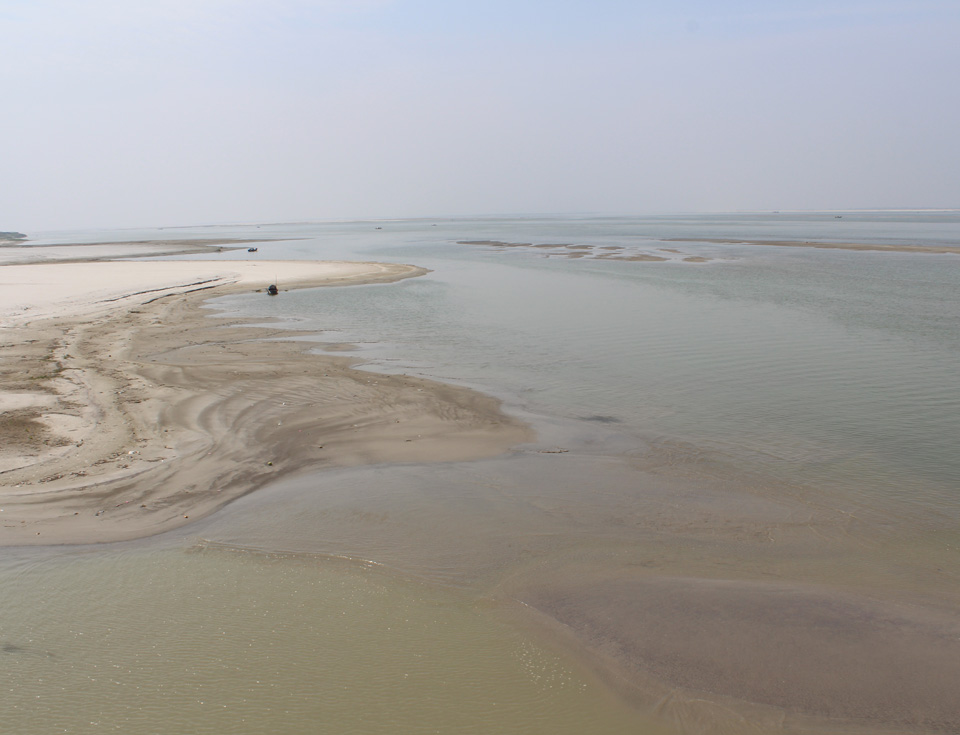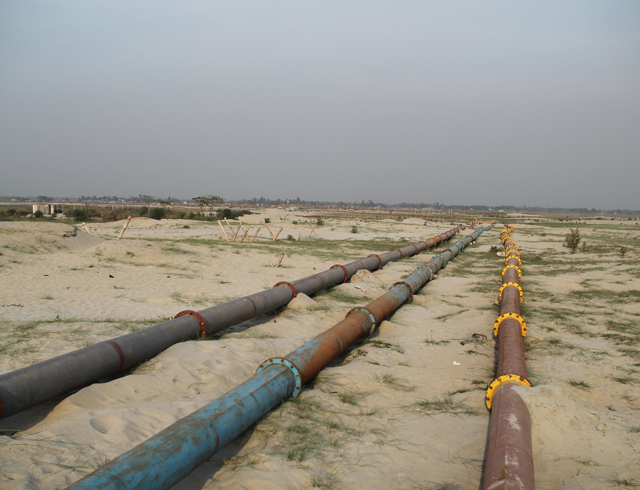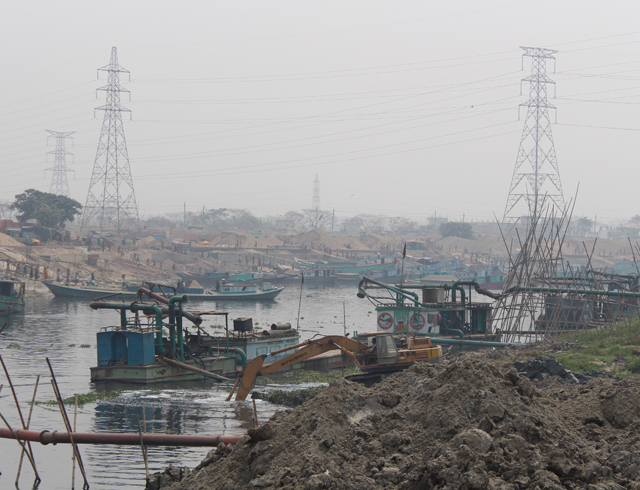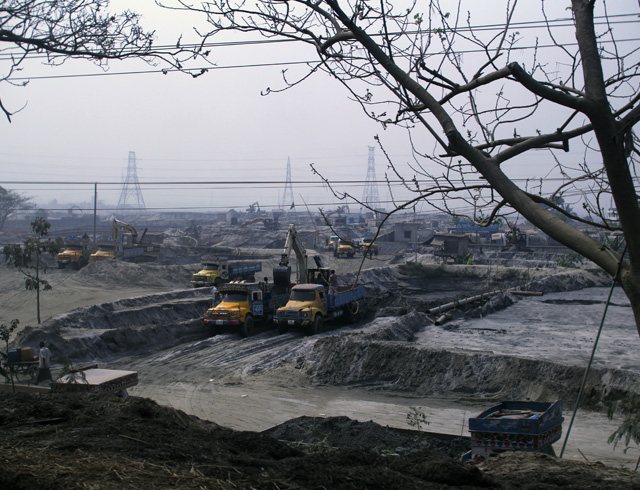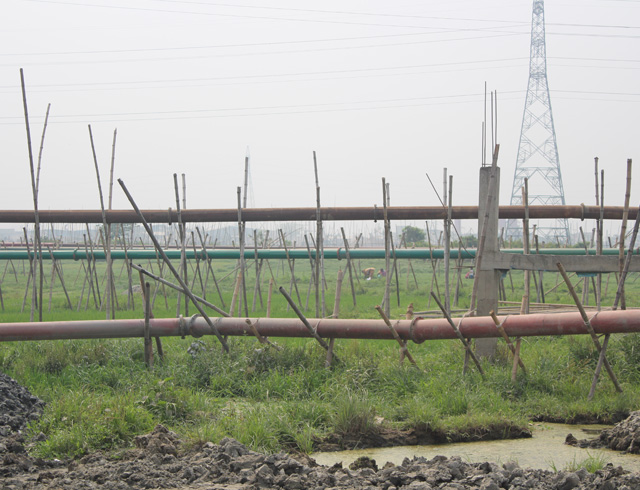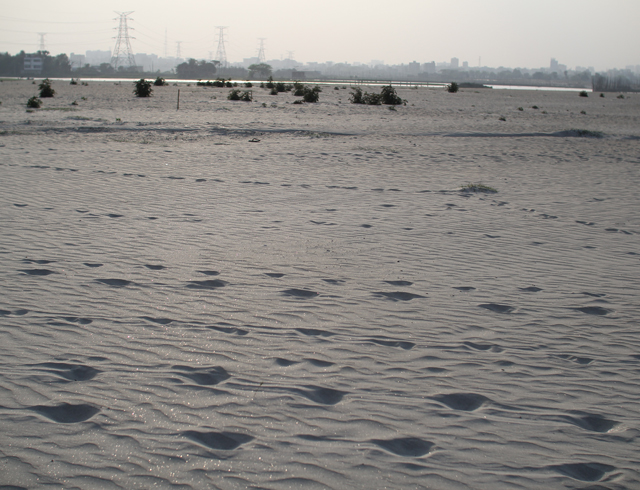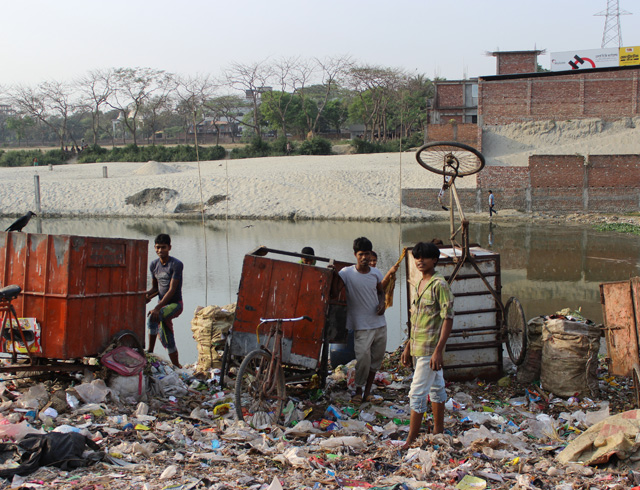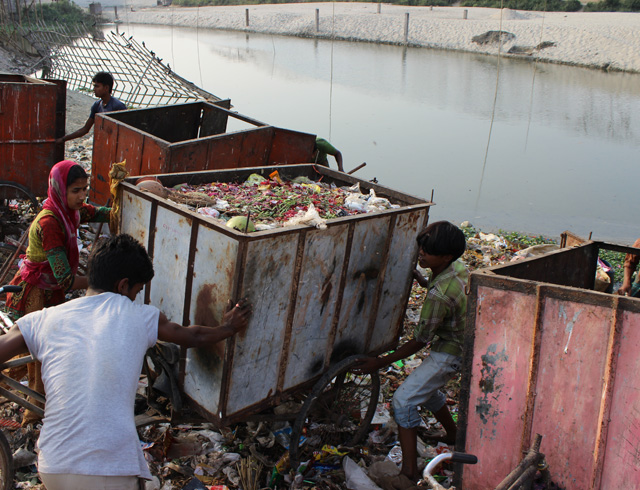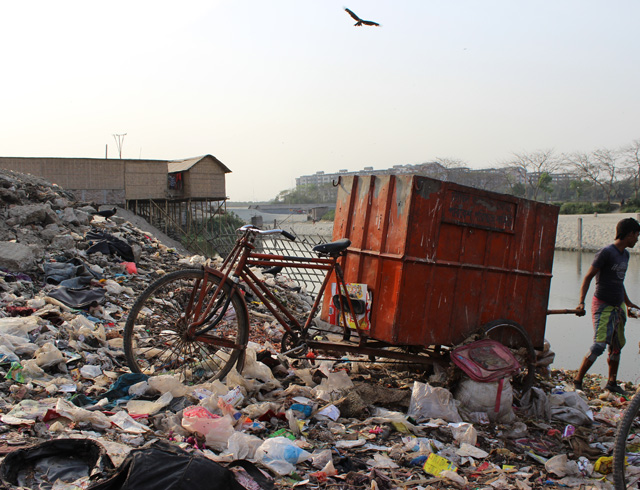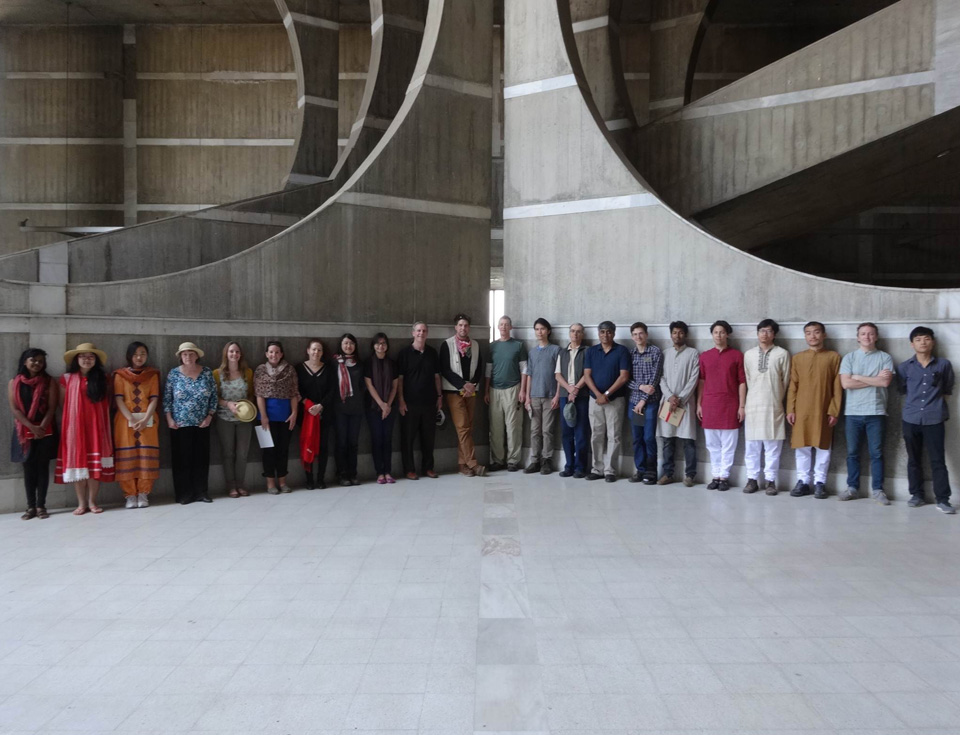How can our studies of the human condition foster meaningful design interventions?
In 2007, Stephen Kieran and James Timberlake began a unique inquiry with graduate students as part of the research-design studio they taught at the University of Pennsylvania's Weitzman School of Design. They wanted to see what would result from applying the research practices of the firm toward the development of design interventions to address some of the most basic human struggles in one of the world's most complex and vulnerable environments. Drawn by the challenges and dynamism of the place and by the legacy of iconic Philadelphia architect Louis Kahn, whose seminal Capitol Complex still stands in Bangladesh, they identified Dhaka, Bangladesh, as the studio's test bed.
Bangladesh is part of a mega-delta that drains water from the major rivers of South Asia. Eighty percent of its land area is classified as flood plain.
© Google Earth 2014
Bangladesh has a population of 150,000,000—roughly half that of the United States—with a land area approximately the size of the state of Iowa. Situated within the world's largest delta and serving as a drainage point for India along with parts of China and Southeast Asia, Bangladesh channels waters from the Ganges, Brahmaputra, and Meghna Rivers before they flow into the Bay of Bengal. Like all deltas, the country is sinking; even as annual flooding brings soil deposits that help maintain elevation, habitable land also subsides under the constant movement of waters. It is an environment dependent on a cycle of flooding that is in direct conflict with modern patterns of urban development.
Development
The country's capital city, Dhaka, with a population of 15,000,000, is one of the fastest-growing, most densely populated megacities in the world. Enveloped in a constant flow of water, soil, and rural-to-urban migrators, land in Dhaka changes daily from wetland to bare soil and from bare soil to urban form. This rapid transformation is suffocating the city's already choked urban core, while development along its periphery is replacing the natural deltaic ecology with an artificial terra firma.
Chars are sandbanks created by the flow of water and the accumulation of sand deposits. Many of these are inhabited in spite of their unstable, shifting nature.
Compounding the impacts of these development practices are the immediate threats of sea-level rise, temperature increase, and decreased agricultural yield. In this environment, preparations are not needed to brace for some unforeseen climatic event; rather, strategies are required that can dynamically interact with the systems currently in flux to bring about a more sustainable future.
Water and Soil
Each year, the studio built upon the accumulated research and learning from past years, much of it based upon collaboration with Bangladeshi students, architects, and planners. The 2014 trip focused primarily on the intersection of water and soil, documenting the means and methods used by local people to manipulate the flows and deposits of water and soil across the delta. The studio's assessment captured both the natural processes at work within the delta and the artificial processes brought about by humans that are now reshaping localized environments within and around Dhaka.
Slideshow photos © Joey Rosenberg and Matt Stone
In traveling to Bangladesh over seven years, we have a better understanding of the place as a shifting environment of soil and water—a hydrological latticework of temporary alluvium deposits and migrating river systems. The ambiguity of habitation within this context is something we sought to understand as we imagined what it means to develop sustainability.
From these investigations, we critically considered how the relationship between wet and dry has the potential to yield transformative interventions addressing people's needs at the intersection of movement, ecology, and economy.
Members of the 2014 studio stand within the National Parliament designed by Philadelphia architect Louis Kahn.





